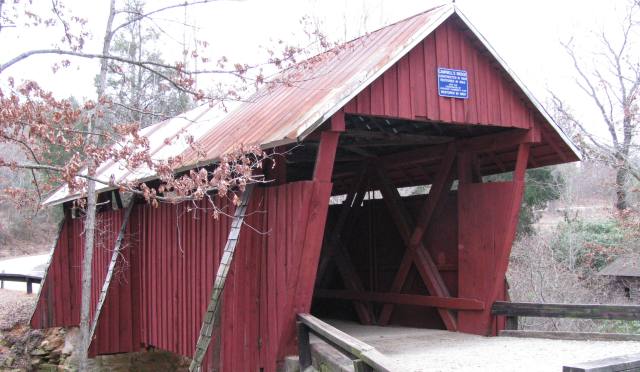Eligibility for the National Register of Historic Places

Campbell's Covered Bridge, Greenville County, listed in the National Register June 2009
A property is considered eligible for the National Register when it meets the National Register Criteria for Evaluation established by the National Park Service. These criteria are used in a number of ways:
• The State Historic Preservation Office (SHPO) uses the criteria to evaluate a property when an individual or organization is interested in nominating it to the National Register. The SHPO asks the interested party to complete a Preliminary Information Form (PIF) for the property. When completed, this form allows the SHPO staff to make a recommendation on whether or not the property appears to be eligible for the Register and it is advisable to undertake the time and expense involved in preparing an actual nomination.
• The National Park Service uses the criteria to evaluate nominations to the National Register. If, however, the owner of a private property---or the majority of private property owners for a property or district with multiple owners---objects to the nomination, the National Park Service determines whether or not the property meets the criteria. If the property meets the criteria, the National Park Service determines the property to be eligible for listing without formally listing the property in the National Register. Properties that are eligible for the National Register, but not listed, do not qualify for federal rehabilitation tax incentives, federal tax incentives for preservation easements on historic buildings and sites, and National Park Service grants when funds are available.
• Federal agencies and the SHPO use the criteria to evaluate historic and archaeological resources that may be affected by federally-assisted projects. Properties that are considered eligible for the National Register and properties that are listed in the National Register are given limited protection from the negative impacts of federally-assisted projects. Under Section 106 review of federally-assisted projects, a property is considered eligible for the National Register if the federal agency and the SHPO agree that it meets the National Register criteria.
• In South Carolina, the SHPO uses the criteria to evaluate historic and archaeological resources that may be affected by projects that are permitted by the Department of Health and Environmental Control’s (DHEC’s) Office of Ocean and Coastal Resource Management (OCRM) and DHEC’s Division of Mining and Solid Waste Management. The SHPO advises these DHEC divisions on the potential impact of projects on properties that are listed in the National Register or are considered by the SHPO to be eligible for the National Register.
• In South Carolina, the SHPO uses the criteria to determine eligibility for state rehabilitation tax credits for owner-occupied residences. In order to meet the criteria for these tax incentives buildings must be listed in the National Register or considered by the SHPO to be individually eligible for the National Register. Buildings within historic districts that are eligible for the National Register, but not listed, do not qualify for the tax credits.
The National Park Service website includes How to Apply the National Register Criteria for Evaluation with guidance to help you evaluate a property in terms of the National Register criteria.
Preliminary Information Form
The Preliminary Information Form (PIF) (PDF) is designed to enable you to provide sufficient information for the State Historic Preservation Office (SHPO) staff to evaluate a property in terms of the criteria for the National Register of Historic Places.
Additional Information
If you have questions or need or more information please contact Virginia Harness, 803-896-6179
Preservation Hotline #1:
How to Nominate a Property to the National Register
Preservation Hotline #8:
Tracing the History of Your Historic Building, gives tips on how to begin your research and the types of sources that are available in South Carolina.
Preservation Hotline #13: Researching Mid-Century / Modern Properties describes sources that can be useful when researching properties built from post WWII through the 1970s.
Researching a Historic Property, published by the National Park Service, includes research hints and guides to general sources, architectural records, architectural styles, and maps.
National Register Publications
National Park Service:
Owner Information

Buffalo Mill, Union County, listed in the National Register October 1990, demolished 2008
